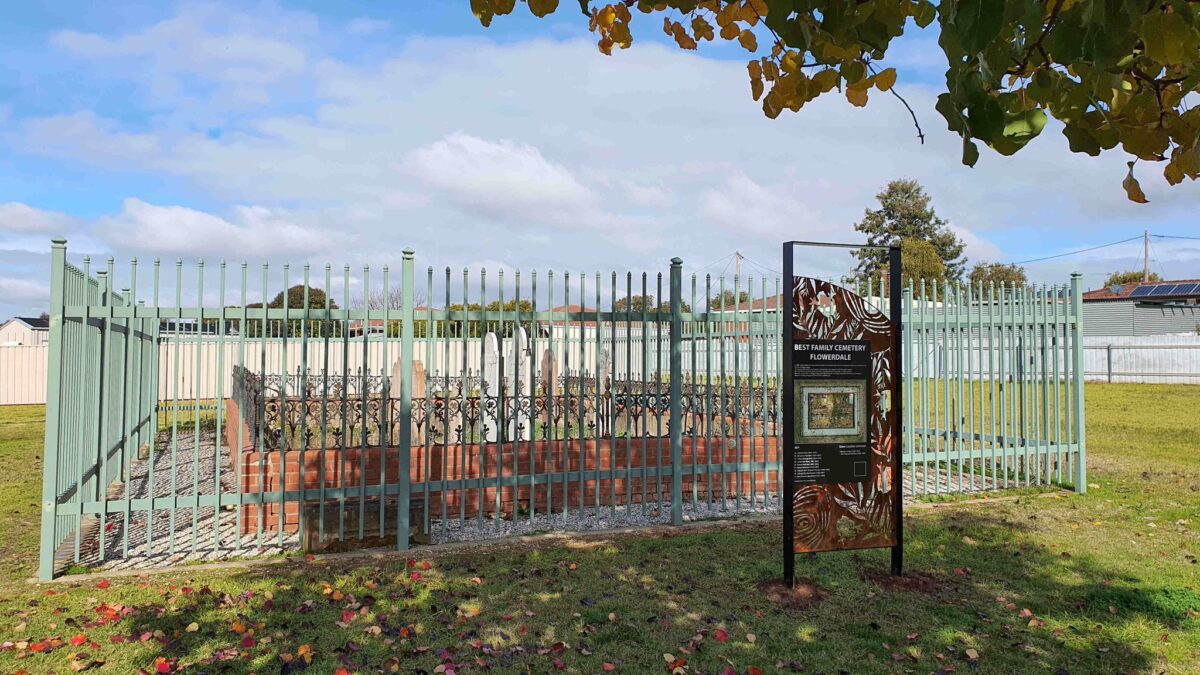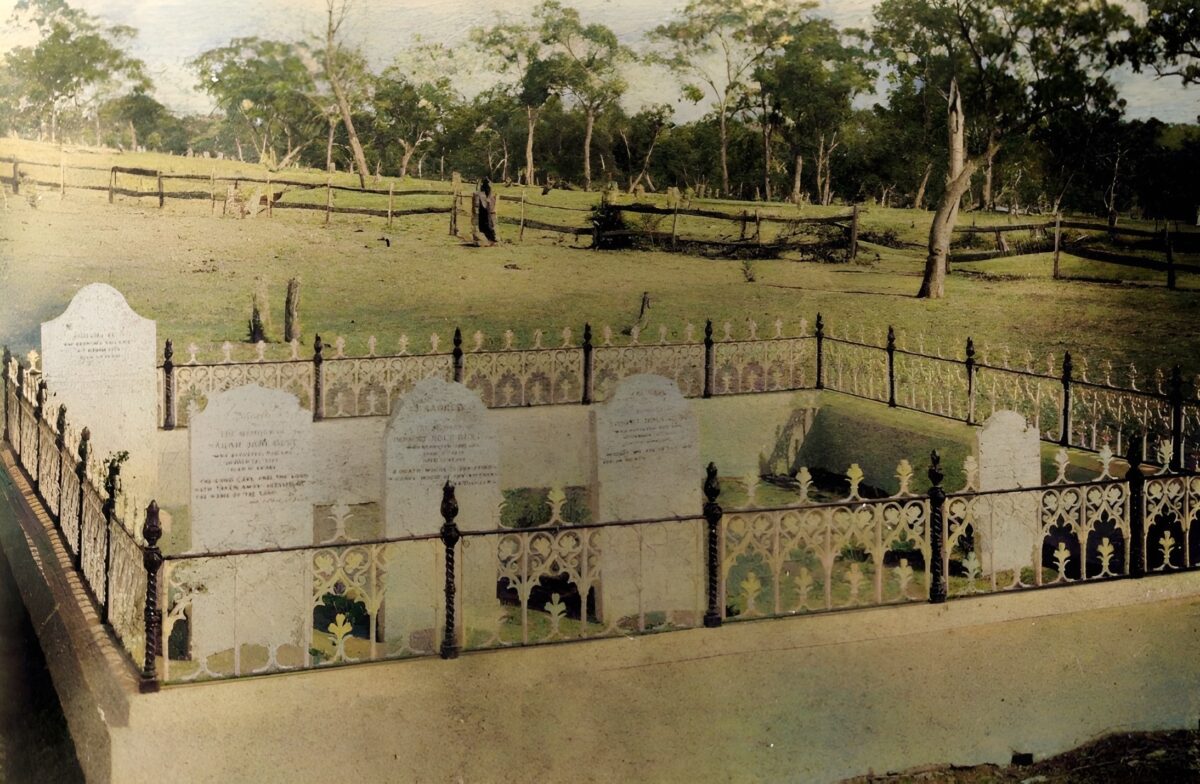
Best Family Graves with a new interpretive sign. Photo: WWDHS.
The arrival of squatter George Best and his family in the Riverina was a tipping point in history that began European settlement of the area where Wagga Wagga is located today.
The Best Family Cemetery at Ashmont is one of the oldest monuments from those early days and Wagga Wagga and District Historical Society (WWDHS) and Wagga City Council have unveiled a new interpretive sign to explain its significance.
“It’s one of the few things that remain from the original (European) family that squatted in Wagga in 1832,” said WWDHS President Geoff Burch.
“They first settled out at Flowerdale on what we call the Horseshoe Lagoon now.
“It’s also significant in terms of First Nations people as this is the beginning of the end of life as they knew it. From 1832 this was the first time their access to the traditional hunting grounds and lands are interrupted.”

An early photo of the Best Family Cemetery taken between 1874 and 1887. Photo: Museum of the Riverina.
Geoff explained that the site dates back to the 1850s and has been preserved by community members and the council.
“The original homestead burned down a long time ago but the cemetery has been retained,” he said.
“It’s on private land, but whenever it was sold, there was always a caveat that this little parcel of land was exempt and you’ll see it listed in every title deed when the property changed hands, so it’s pretty special that it’s survived all this time.
“Last year we got a council grant and have been able to get that sign put up so that when people walk there, at least they know who’s buried there and why it’s important.”
Geoff has also published an extensive new article featuring the history of the Best family and the original ‘Wogga Wogga Run’.
“George Best named his run at Flowerdale ‘Wogga Wogga’ and later the village of Wagga Wagga, that was a few miles away and up a bit higher, was subsequently named after the run,” he explained.
“Part of the story is how interconnected these early families were and I suppose that being a prominent family it was probably expected you marry into another prominent family.”
While names changed and were lost through marriage, Geoff said there were many that remained familiar and were preserved on the city’s street signs and suburbs.
“Following the Best family history you find that they might become a Bourke or a Tompson or a Pearson or something else, but the connections are there in the background if you dig a little bit.”
He hopes that the new sign offers a glimpse into Wagga’s past and prompts visitors and locals to dig a bit deeper and get a broader understanding of our past.
“I think it’s a good starting point to get an understanding of when white settlement first started in 1932 after millennia of Indigenous history,” he said.
“It gives you a timeline of our short history in Australia and then how it grew from that. The stories are all interconnected and everything flows from that through to today.”
You can read Geoff’s research on the Best Family here.
